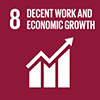Description/achievement of initiative
Between May 1st and October 31st 2010 the city of Shanghai hosted the World Expo 2010. This event became one of the most successful Expos for a number of reasons: the timing, the place, the contents and the ability to foster models for future urban development.
From a purely quantitative perspective, Expo 2010 featured the largest site, a record number of participants and visitors and an unprecedented events and forums programme. The 5.28 square kilometres site, located at the heart of the city and stretching along the banks of the Huangpu River, was a massive urban regeneration project aimed at developing new business, cultural venues and green spaces.
Source: Shanghai Manual: A Guide for Sustainable Urban Development in the 21st Century (2010)
The Expo designed and applied environmental innovation at a larger scale than any Expo before. It fulfilled its promise to be a green and low-carbon Expo. It is fair to say that part of the environmental legacy of the 2008 Beijing Olympics (see section 3.4. below) was to create an example for Shanghai 2010 to follow and to surpass.
The Shanghai Expo radically changed the image and landscape of Shanghai's urban environment. Improvements were made in air quality, policies for emissions reductions and the beautification of key areas within the city. To achieve this, Shanghai relocated several highly polluting factories that were previously located in the center of the city and focused its efforts on improving facilities along the Huangpu River. Factories and industrial buildings were transformed into museums and other cultural and recreational centers.
Implementation methodologies
Arrangements for Capacity-Building and Technology Transfer
Coordination mechanisms/governance structure
Partner(s)

